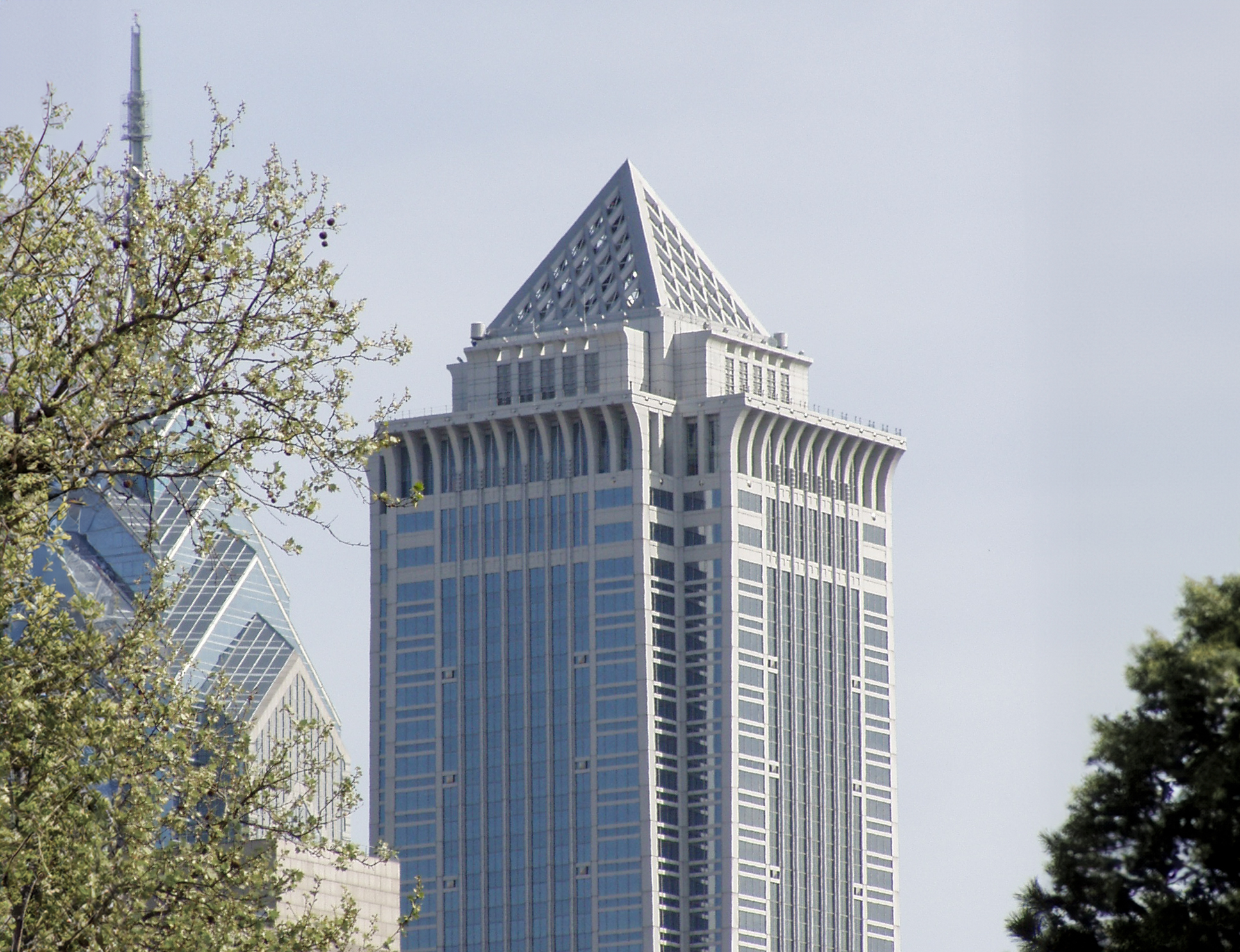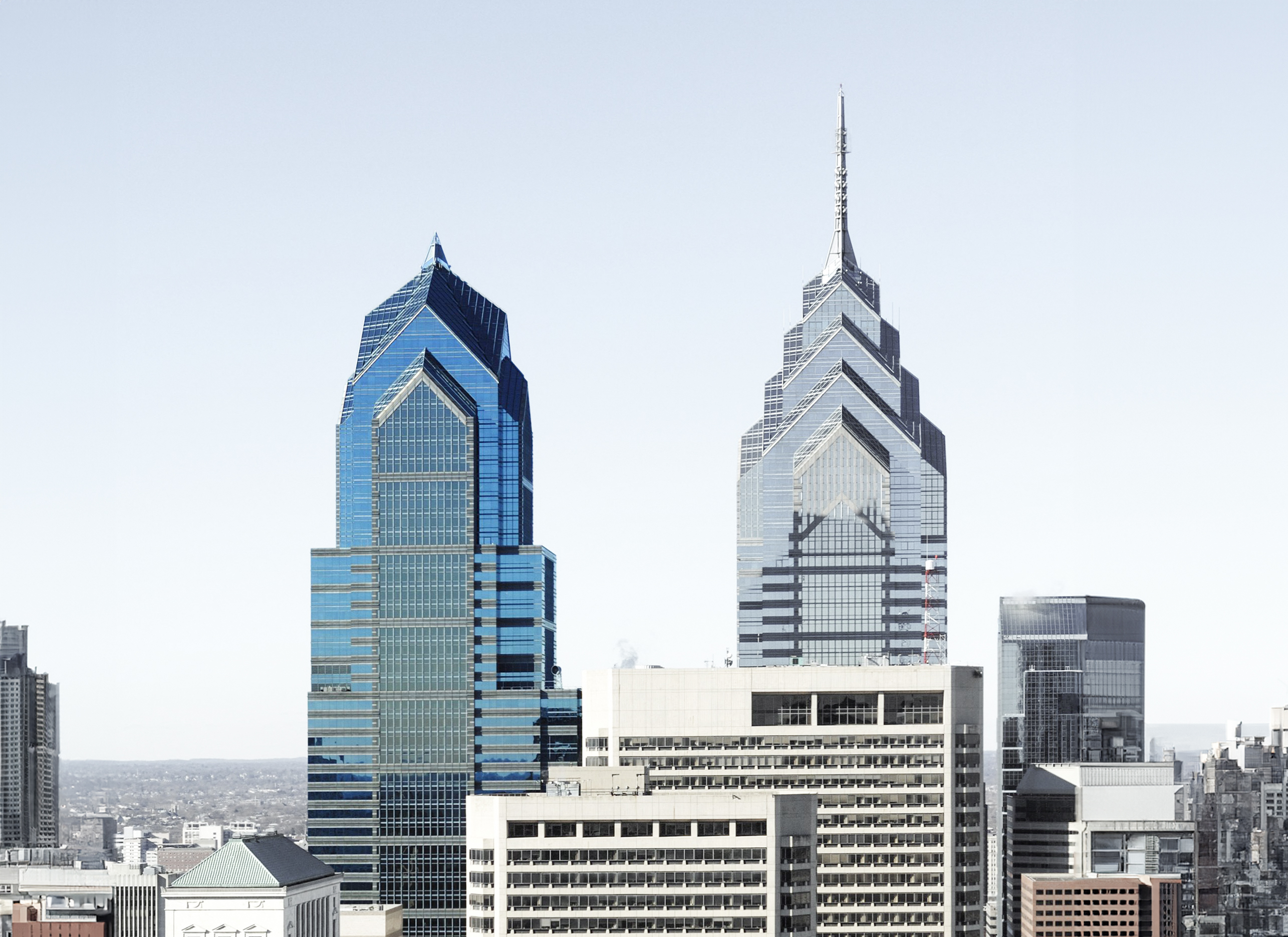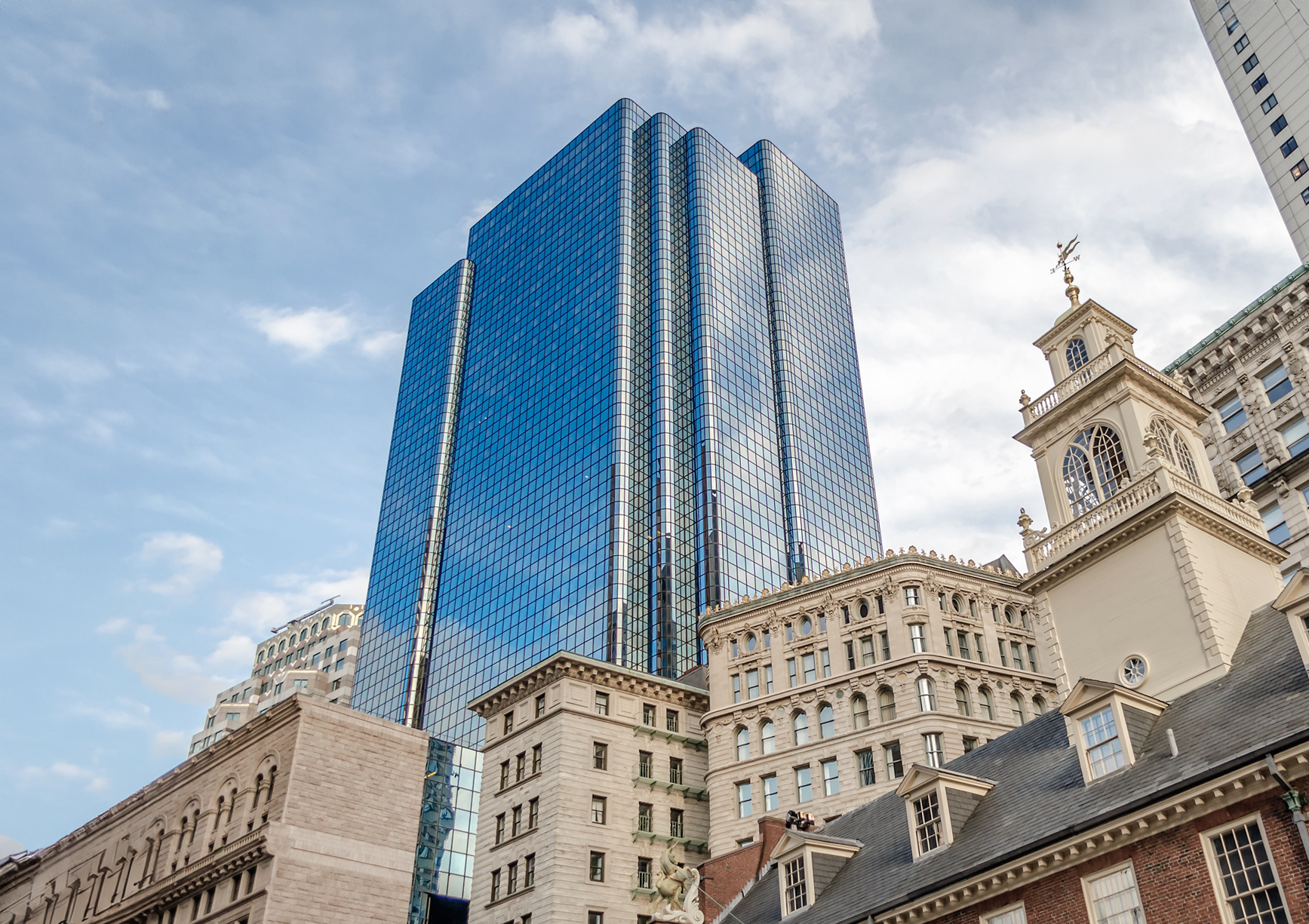The G. Fred DiBona Jr. Building is a Postmodernist skyscraper designed by WZMH Architects, and built between 1988 and 1990 in Philadelphia, PA.
G. Fred DiBona Jr. Building is not the only name you might know this building by though. It is common for companies to want to attach their names to iconic buildings when they move in, or for the general public to come up with nicknames, and this one is no exception. The building has changed names several times over the years, and is also known as:
- Independence Blue Cross Tower between 1990 and 2005.
- Blue Cross/Blue Shield Tower.
- IBX Tower Building.
Its precise street address is 1901 Market Street, Philadelphia, PA. You can also find it on the map here.
In 2014 the G. Fred DiBona Jr. Building was awarded with the TOBY Award.
The building underwent a major restoration in 2014. The architect commissioned to undertake this restoration was Elliott-Lewis.






